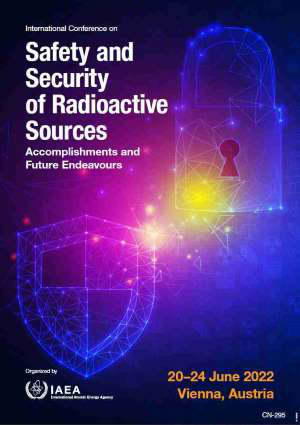Speaker
Description
The German Federal Office for Radiation Protection (BfS) can support other national and international authorities, when requested, in the response to nuclear security events, including when radioactive sources are missing, stolen or found outside of regulatory control [1]. The BfS also supports radiological crime scene management and nuclear forensics when sealed or unsealed radioactive sources are present. A case involving Iodine-125 has been presented previously [2].
A recent example of a Co-60 source found outside of regulatory control (see Figure 1) demonstrates the support the BfS can provide. In January 2019 a radiation portal monitor in the German city of Hamburg alarmed. The source of the alarm was a scrap metal container. After further measurement and the involvement of the local competent authority, the source capsule was separated from the shipment and transported to a storage facility under the control of the regulatory authority. The necessary coordination within Germany was extensive, as was the international coordination and reporting, including to the Incident and Trafficking Database (ITDB) of the IAEA.
Figure1_Co60.jpg
Figure 1: Co-60 source (10 mm x 10 mm squares)
The Federal Ministry for the Environment, Nature Conservation and Nuclear Safety (BMU) and BfS launched a project to examine the source forensically at the Radiochemistry Munich (RCM). Some important considerations included maintaining the chain of custody and preparing the laboratory to receive the source. The possibilities and limitations of nuclear forensics on a highly active sealed source will be highlighted in this contribution. Importantly, it was found that standard operating procedures for forensically investigating orphan sources are required. The lessons learned from the nuclear forensic examination will be shared to contribute to international best practice.
The BfS oversees research projects, funded by BMU, on the topic of the detection of radioactive sources in scrap metal shipments. A completed project focussing on detection via radiation portal monitors [3] is currently being extended to include the detection of radioactive sources in scrap via handheld instruments. The results of the research will be used to improve the response to future incidents.
BfS can offer expert support alone, as mentioned above, or as part of the German CBRN response capabilities on the federal level (UnterstützungsverBund CBRN, “UVB-CBRN”) under the leadership of the Federal Police (BPOL) [4]. Experts from the Federal Criminal Police Office (BKA), the BPOL and the BfS cooperate to respond to events involving the misuse of RN materials. Further cooperation partners to respond to events involving chemical and/or biological substances are the CBRN-Protection Unit of the Bundeswehr, the Robert-Koch-Institute and the Bundeswehr Research Institute for Protective Technologies and CBRN Protection. The new structure will be shared in order to contribute to best practice.
The wider range of cooperation partners in the UVB-CBRN allows the police to receive timely and effective expert support, including during the forensic examination. For example, during crime scene work where radioactive sources (sealed or unsealed) are present, police experts require practical support and advice on radiation protection at the scene and nuclear forensics. Simultaneously, all deployed forces may need additional practical support and advice on additional chemical and/or biological threats at the scene. The grouping of CBRN cooperation partners at the federal level in Germany improves the safety of the deployed forces and the public and aims to reduce the spread of CBRN material into the environment.
[1] https://www.bfs.de/EN/topics/ion/accident-management/bfs/hazard-avoidance/nga.html
[2] „Misuse of a medical isotope: 125I labeled playing cards in Germany, a case study“, E.A. Kroeger, A. Rupp, J. Gregor, Health Physics, Vol. 119, No.1, July 2020, p128-132
[3] https://doris.bfs.de/jspui/handle/urn:nbn:de:0221-2019052818209
[4] https://www.bfs.de/EN/topics/ion/accident-management/bfs/hazard-avoidance/cbrn.html
| Country OR Intl. Organization | Germany |
|---|

